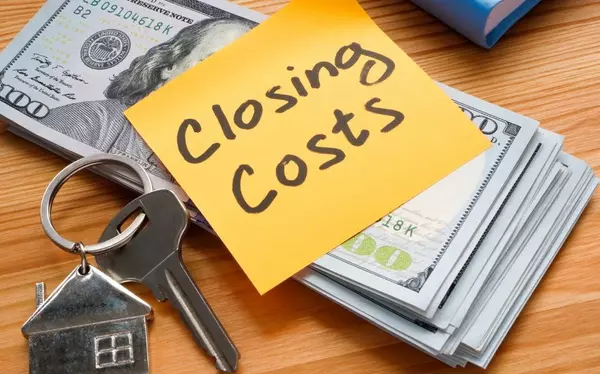What is the best way to buy my first house?

I. Introduction
Setting the Stage: Dreaming of Owning Your First Home
Owning your first home is a monumental milestone in life. It's a symbol of independence, stability, and accomplishment. From envisioning the perfect kitchen to imagining lazy Sunday afternoons in your own backyard, the dream of homeownership is filled with excitement and anticipation.
Importance of Careful Planning and Research
However, amidst the excitement, it's crucial to approach the journey of buying your first house with careful planning and thorough research. This isn't just about finding a place to live; it's about making one of the most significant financial investments of your life. Taking the time to understand the process and your options can save you from unnecessary stress and financial strain down the road.
Overview of the Process
Before diving into the nitty-gritty details, let's take a bird's eye view of the home buying process. It typically involves several steps, including assessing your financial readiness, finding the right property, securing financing, making an offer, getting a home inspection, and finally, closing the deal. To achieve a seamless and effective transaction, each step needs to be carefully considered and paid close attention to.
Key Takeaways:
- Start with Financial Preparedness: Assess your financial readiness by creating a budget, understanding your credit score, and saving for a down payment and other upfront costs. Consider additional expenses like closing costs and ongoing homeownership costs to ensure you're financially equipped for the journey.
- Know Your Needs and Wants: Choose the right neighborhood by considering factors like proximity to work and amenities. Determine your must-have features and identify deal-breakers to streamline your search and find a home that meets your criteria.
- Explore Financing Options: Understand the different types of mortgage loans available, including government-backed loans like FHA, VA, and USDA loans, as well as conventional and jumbo loans. Decide whether to work with a mortgage broker or go directly to a lender based on your preferences and needs.
- Research the Housing Market: Stay informed about current market trends and work with a real estate agent to find the right property. Browse listings online, attend open houses, and evaluate property values to make informed decisions and negotiate effectively.
- Complete the Purchase Process with Care: Conduct a thorough home inspection, ensure the property appraises for the agreed-upon price, and secure homeowner's insurance before closing the deal. Plan for a smooth move-in process and budget for ongoing homeownership costs while considering long-term financial planning and building equity in your home.
II. Assessing Your Financial Readiness
Budgeting for the Big Purchase
The first step in buying your first house is assessing your financial readiness. This starts with creating a realistic budget that takes into account your income, expenses, and savings goals. A budget will help you determine how much you can afford to spend on a home while still meeting your other financial obligations.
Understanding Your Credit Score
Your credit score plays a significant role in the home buying process as it affects the interest rate you'll qualify for on your mortgage loan. Before starting your house hunt, it's essential to check your credit score and address any issues that may be dragging it down. This might involve paying off outstanding debts, disputing errors on your credit report, or taking steps to improve your credit utilization ratio.
Saving for a Down Payment and Other Costs
Putting money down for a down payment is one of the largest obstacles facing first-time home purchasers. While the traditional down payment is 20% of the purchase price, there are options available for those who can't afford to put down that much. Government-backed loans, such as FHA loans, allow for down payments as low as 3.5%, while VA loans and USDA loans offer zero-down financing for eligible borrowers.
In addition to the down payment, it's essential to budget for other upfront costs associated with buying a home, such as closing costs, which typically range from 2% to 5% of the purchase price. These costs can include loan origination fees, appraisal fees, title insurance, and prepaid expenses like property taxes and homeowners insurance.
Considering Additional Expenses (Closing Costs, Maintenance, etc.)
Beyond the upfront costs, it's important to factor in ongoing expenses associated with homeownership. This includes property taxes, homeowners insurance, utilities, maintenance and repairs, and HOA fees (if applicable). Owning a home comes with added responsibilities and expenses compared to renting, so it's crucial to budget accordingly and have a financial cushion for unexpected costs.
III. Understanding Your Needs and Wants
Location, Location, Location: Choosing the Right Neighborhood
When it comes to buying your first house, the location is paramount. It's not just about the property itself but also about the neighborhood it's situated in. Consider factors such as proximity to work, schools, amenities, and public transportation. Do you prefer a bustling urban neighborhood or a quiet suburban enclave? Take the time to explore different areas and envision yourself living there to determine which neighborhood best fits your lifestyle and needs.
Determining Your Must-Have Features
Once you've narrowed down your preferred neighborhoods, it's time to determine your must-have features in a home. Make a list of non-negotiables, such as the number of bedrooms and bathrooms, layout, square footage, and any specific amenities or features you desire, such as a backyard, garage, or updated kitchen. Knowing what you absolutely need in a home will help streamline your search and prevent you from being swayed by properties that don't meet your criteria.
Identifying Deal-Breakers
In addition to must-have features, it's equally important to identify deal-breakers – aspects of a property that you're unwilling to compromise on. This could include structural issues, outdated plumbing or electrical systems, or a location with high crime rates or poor school districts. By knowing your deal-breakers upfront, you can save yourself time and energy by ruling out properties that don't meet your standards.
IV. Exploring Your Financing Options
Mortgage Basics: Fixed-Rate vs. Adjustable-Rate Mortgages
When it comes to financing your first home, one of the most significant decisions you'll need to make is choosing between a fixed-rate and adjustable-rate mortgage (ARM). With a fixed-rate mortgage, your interest rate remains constant throughout the life of the loan, providing stability and predictability in your monthly payments. On the other hand, an ARM typically starts with a lower interest rate but can fluctuate over time based on market conditions, potentially resulting in higher payments down the road. Consider your financial goals, risk tolerance, and long-term plans when deciding which type of mortgage is right for you.
Government-Backed Loans (FHA, VA, USDA)
For first-time homebuyers who may have difficulty qualifying for a conventional loan, government-backed loan programs such as FHA, VA, and USDA loans offer accessible financing options with low down payment requirements and flexible eligibility criteria. FHA loans, insured by the Federal Housing Administration, require a minimum down payment of 3.5% and are popular among buyers with less-than-perfect credit. VA loans, available to eligible veterans and active-duty service members, offer 100% financing with no down payment required. USDA loans, backed by the U.S. Department of Agriculture, are designed for rural and suburban homebuyers and also offer 100% financing.
Conventional Loans and Jumbo Loans
Alternatively, if you have strong credit and a sizable down payment, you may qualify for a conventional loan, which is not backed by the government. Conventional loans typically require a down payment of at least 3% to 20% of the purchase price and have stricter credit and income requirements compared to government-backed loans. If you're purchasing a high-priced property that exceeds the conforming loan limits set by Fannie Mae and Freddie Mac, you may need a jumbo loan, which typically requires a larger down payment and higher credit scores.
Working with a Mortgage Broker vs. Going Directly to a Lender
When shopping for a mortgage, you have the option of working with a mortgage broker or going directly to a lender. A mortgage broker acts as an intermediary between you and multiple lenders, helping you compare loan options and secure the best terms and rates. On the other hand, going directly to a lender means working with a single financial institution that offers its own mortgage products. Consider your preferences, time constraints, and comfort level with the mortgage process when deciding which route to take.
V. Researching the Housing Market
Analyzing Current Market Trends
Before diving into the housing market, it's crucial to analyze current trends. Keep an eye on factors like inventory levels, median home prices, and average days on market in your desired area. Understanding market conditions will help you make informed decisions and navigate negotiations effectively.
Working with a Real Estate Agent
The most valuable resource for you during the house-buying process may be an experienced real estate agent. They have access to resources and market insights that can help you find the right property at the right price. Seek out an agent who understands your needs and priorities and can guide you through the complexities of buying your first home.
Browsing Listings Online and Attending Open Houses
With countless listings available online, take advantage of platforms like Zillow, Realtor.com, and local MLS websites to browse available properties. Attend open houses to get a feel for different neighborhoods and home styles. Take notes and ask questions to help narrow down your options.
Evaluating the Value of Properties
When evaluating properties, consider factors like location, size, condition, and comparable sales in the area. Work with your real estate agent to determine a fair market value for each property you're interested in. This will help you make competitive offers and avoid overpaying for a home.
VI. Making an Offer and Negotiating
Understanding the Offer Process
Making an offer on a home involves more than just stating a price. Your offer should also outline important terms and conditions, such as the desired closing date, financing contingency, and any contingencies related to inspections or repairs. Your real estate agent can help you craft a strong offer that stands out to sellers.
Determining Your Initial Offer Price
When determining your initial offer price, consider factors like the property's condition, market value, and your budget. Your real estate agent can provide valuable insight into recent sales and comparable properties to help you make an informed decision.
Negotiating Terms with the Seller
Negotiating can be a delicate dance, but it's an essential part of the home buying process. Be prepared to negotiate on price, repairs, closing costs, and other terms of the sale. Trust your real estate agent to advocate for your best interests and help you reach a mutually beneficial agreement with the seller.
Contingencies: Protecting Yourself in the Contract
Including contingencies in your purchase agreement can provide protection and peace of mind. Common contingencies include financing, appraisal, and home inspection contingencies, which allow you to back out of the deal if certain conditions aren't met. Work with your real estate agent and attorney to ensure your contract includes necessary contingencies to safeguard your investment.
VII. Completing the Purchase Process
The Importance of a Home Inspection
An essential stage in the purchasing process is a home inspection. Hire a qualified inspector to thoroughly evaluate the property for any hidden issues or safety concerns. Review the inspection report carefully and discuss any findings with your real estate agent to determine the best course of action.
Appraisal: Ensuring the Property's Value
The lender will require an appraisal to ensure the property's value matches the agreed-upon purchase price. If the appraisal comes in lower than expected, you may need to renegotiate with the seller or bring additional funds to the table to cover the shortfall.
Securing Homeowner’s Insurance
Homeowner's insurance protects your investment and provides coverage for unexpected events like fire, theft, or natural disasters. Shop around for quotes and choose a policy that offers the right level of coverage for your needs.
Closing the Deal: Signing Documents and Transferring Ownership
The final step in the purchase process is closing the deal. At the closing table, you'll sign a stack of documents, including the mortgage note, deed of trust, and closing disclosures. Once all the paperwork is signed and funds are transferred, ownership of the property officially transfers to you, and you'll receive the keys to your new home.
VIII. Moving In and Beyond
Planning for the Move
As you prepare to move into your new home, it's essential to have a solid plan in place. Start by creating a timeline and checklist of tasks to complete before moving day, such as packing, hiring movers, transferring utilities, and updating your address with important contacts. Having a clear plan will help alleviate stress and ensure a smooth transition.
Settling into Your New Home
Once you've moved in, take the time to settle into your new surroundings. Unpack gradually, focusing on essentials first, and gradually tackle other rooms. Familiarize yourself with the neighborhood, meet your neighbors, and explore local amenities. Making your new house feel like home will help you adjust and start building lasting memories.
Budgeting for Ongoing Homeownership Costs
A house payment is not the only expense associated with homeownership. Budget for costs like property taxes, homeowners insurance, utilities, maintenance, and repairs. Set aside funds each month for these expenses to avoid financial strain down the road and ensure your home remains in good condition.
Building Equity and Long-Term Financial Planning
As you settle into homeownership, keep an eye on building equity in your home. Equity is the difference between your home's market value and the amount you owe on your mortgage. Consider strategies to build equity faster, such as making extra mortgage payments or increasing your home's value through renovations. Long-term financial planning is also essential to ensure your home remains a valuable asset and supports your financial goals for the future.
IX. Conclusion
Reflecting on the Journey
As you look back on the journey of buying your first home, take a moment to reflect on how far you've come. From dreaming of homeownership to navigating the complexities of the real estate market, you've overcome challenges and achieved a significant milestone. Celebrate your accomplishments and the memories you've made along the way.
Embracing the Joys and Responsibilities of Homeownership
Owning a home is a journey filled with both joys and responsibilities. Embrace the sense of pride and accomplishment that comes with homeownership, but also recognize the commitment it requires. Take care of your home, invest in its maintenance and improvement, and contribute positively to your community.
Encouragement for Future Homebuyers
For those still on the path to homeownership, remember that the journey is worth it. Stay focused on your goals, educate yourself about the process, and seek support from professionals and loved ones. With determination and perseverance, you'll soon be unlocking the door to your very own home.
Categories
Recent Posts










